Vehicle features here on Expedition Portal offer a wealth of information about overland builds, including specifications, modifications, and upgrades. While they are helpful in a general sense, I want to dig deeper. I want to know what’s in drawer systems, how dry food storage is organized, what kind of toiletry kits overlanders swear by, and how they keep their clothes, shoes, spices, and paperwork organized. What are those small but vital pieces of gear that become overshadowed by winches, tents, Hi-Lift jacks, and mud-terrains? Let’s dig in and find out.
The first featured vehicle interior highlights Ferenc and Evelin’s (Overland Site) 2006 Toyota Land Cruiser Prado. From Budapest, Hungary, Ferenc and Evelin traveled for four years in their Prado, including through Northwest Africa and from Budapest to Singapore. Ferenc purchased the stock Prado in 2016 with a specific goal in mind. He wanted a daily driver that could also make big trips across the globe. The build is simple and inexpensive and suited the couple well during their travels.

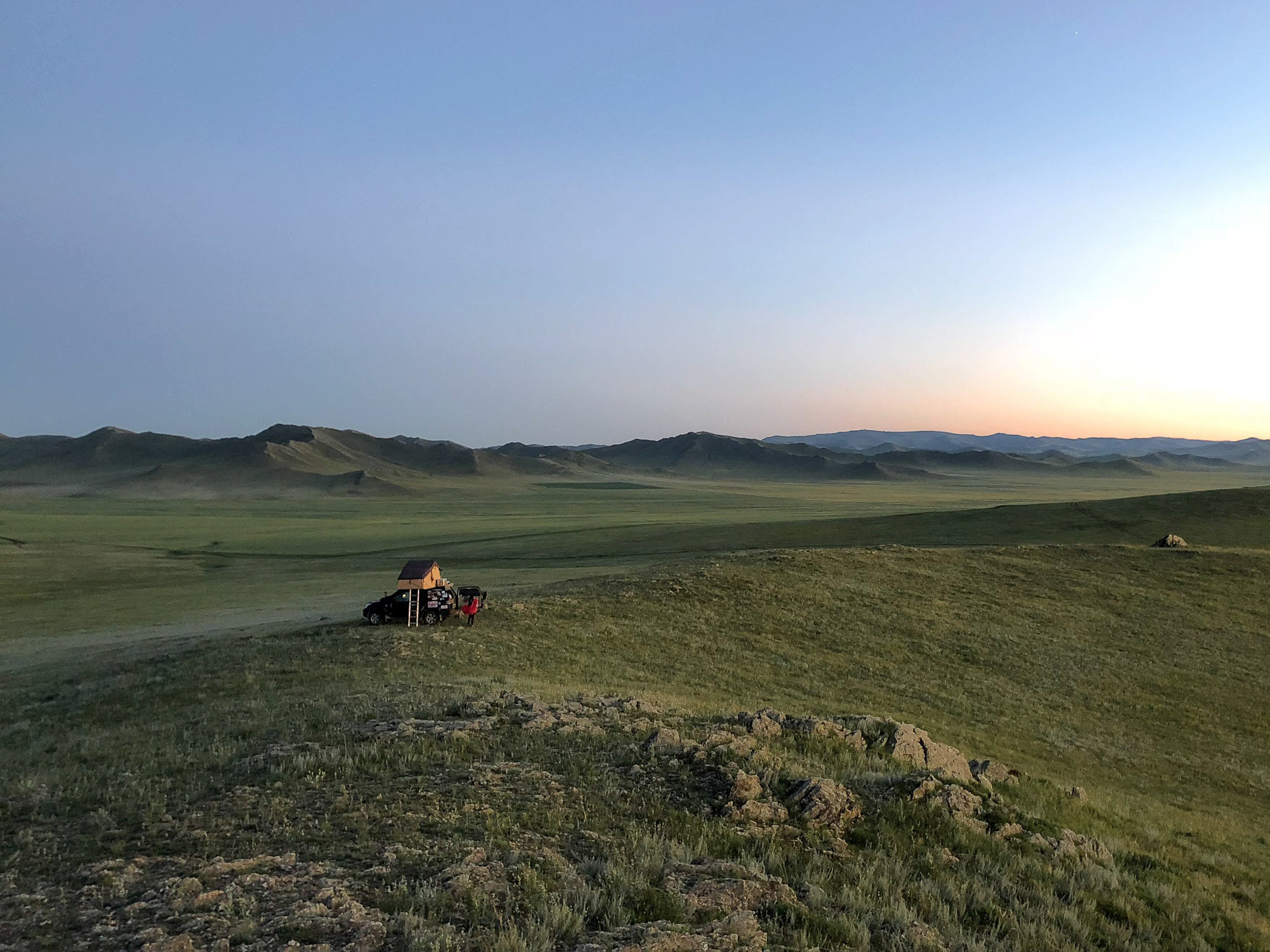
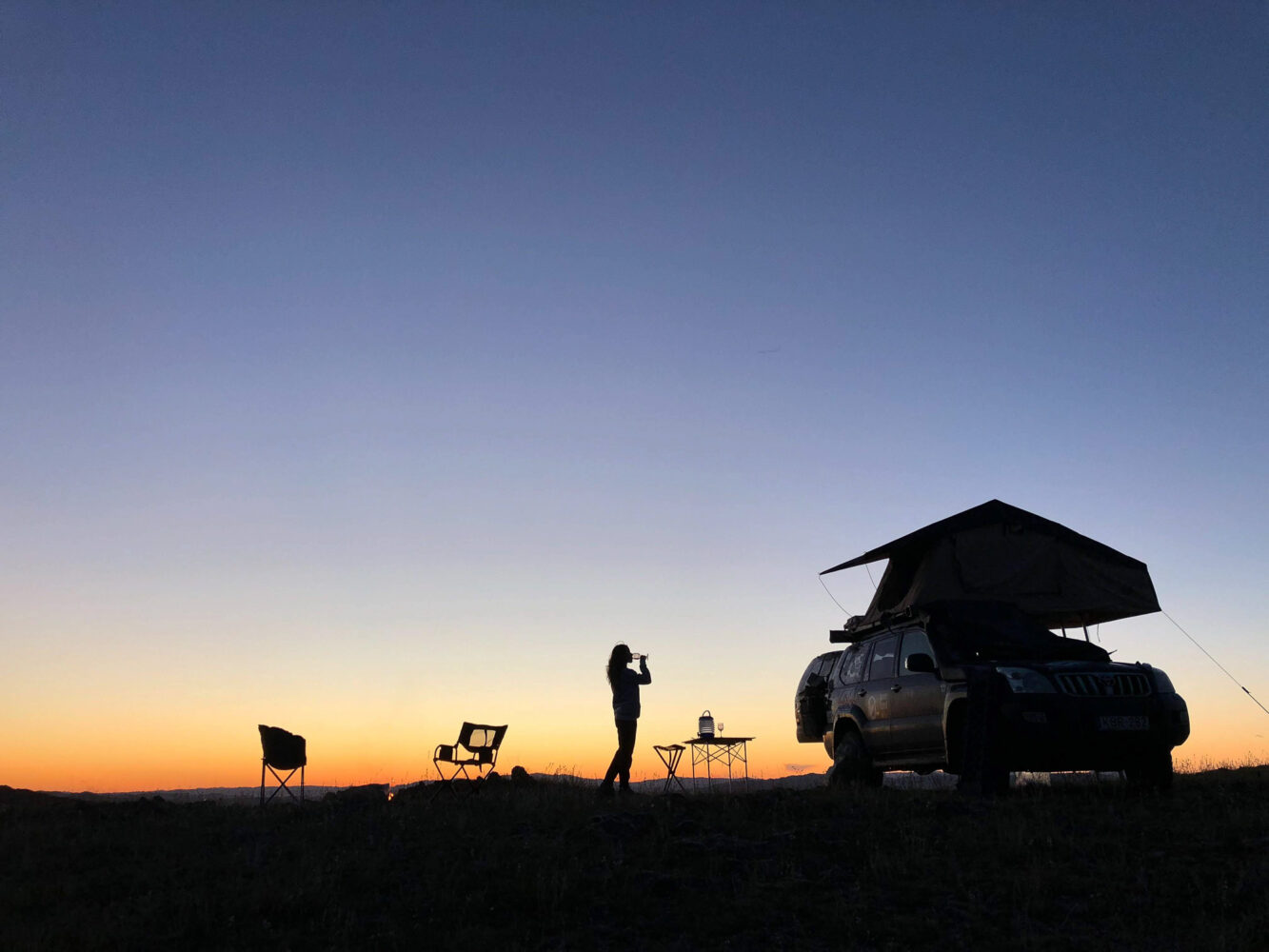
Sleeping Platform and Storage
Ferenc was keen on a rooftop tent. “When I was looking at YouTube channels and Instagram, I really liked that kind of setup—you know, the treehouse feeling,” he says. The couple topped their Prado with a Euro 4×4 Parts rooftop tent, in which they stored sleeping bags, a bedsheet, and pillows.
In addition to storage space, they desired a secure place to sleep during periods of poor weather or when they didn’t want to attract too much attention during stays in small villages, so Ferenc built a drawer system and sleeping platform in the rear of the Prado. With his dad’s help, Ferenc constructed the drawer system out of half-inch plywood, reserving a lighter wood for the drawers. “It was a very ‘back of a napkin’ kind of planning,” he says. “We covered the whole unit with felt, including the inside of the drawers. There were also two different versions of the drawer system. We used the first version during a two-month trip to Northwest Africa, and then we added a second drawer and a fridge slide for the Budapest to Singapore trip.”
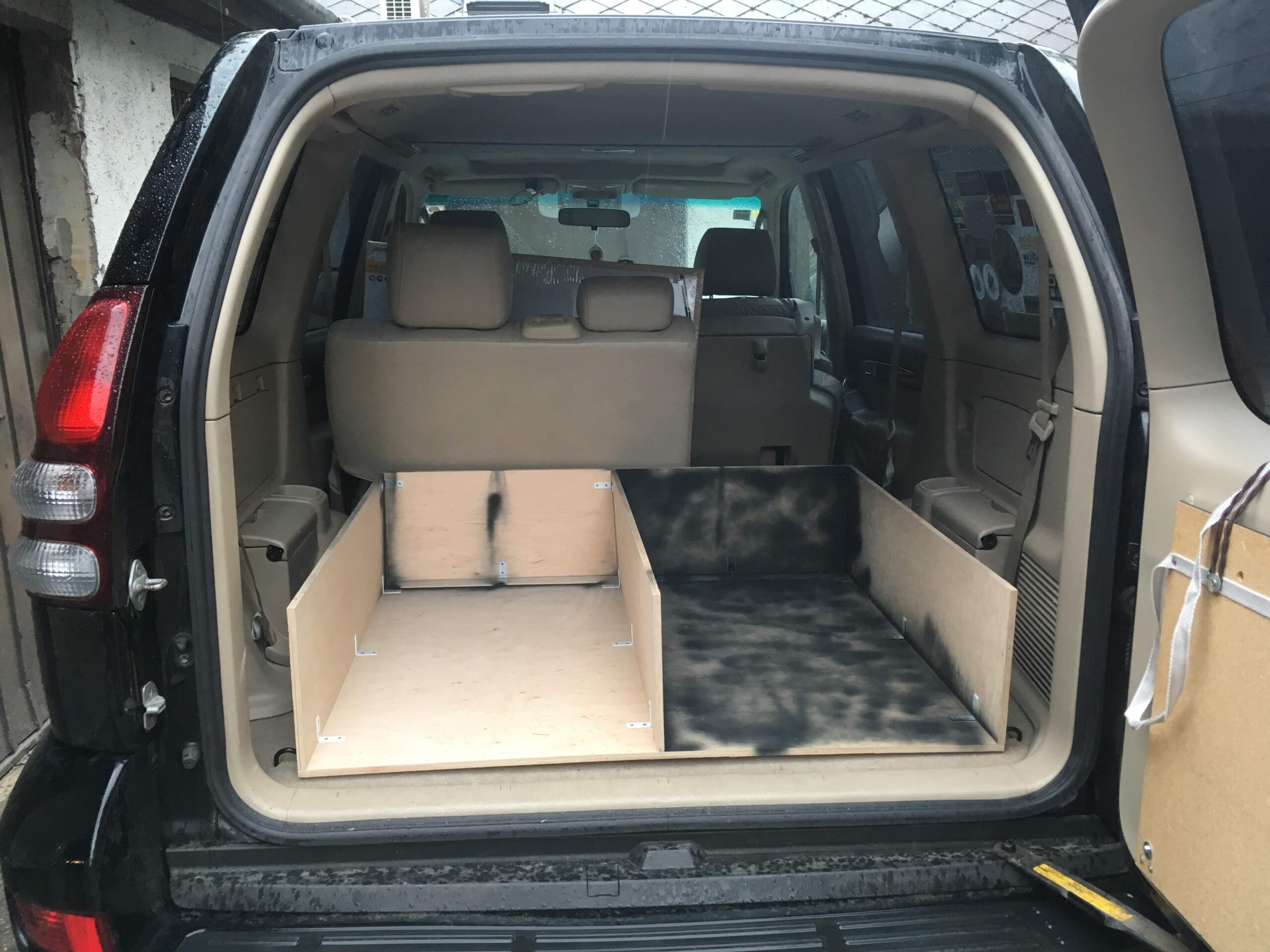
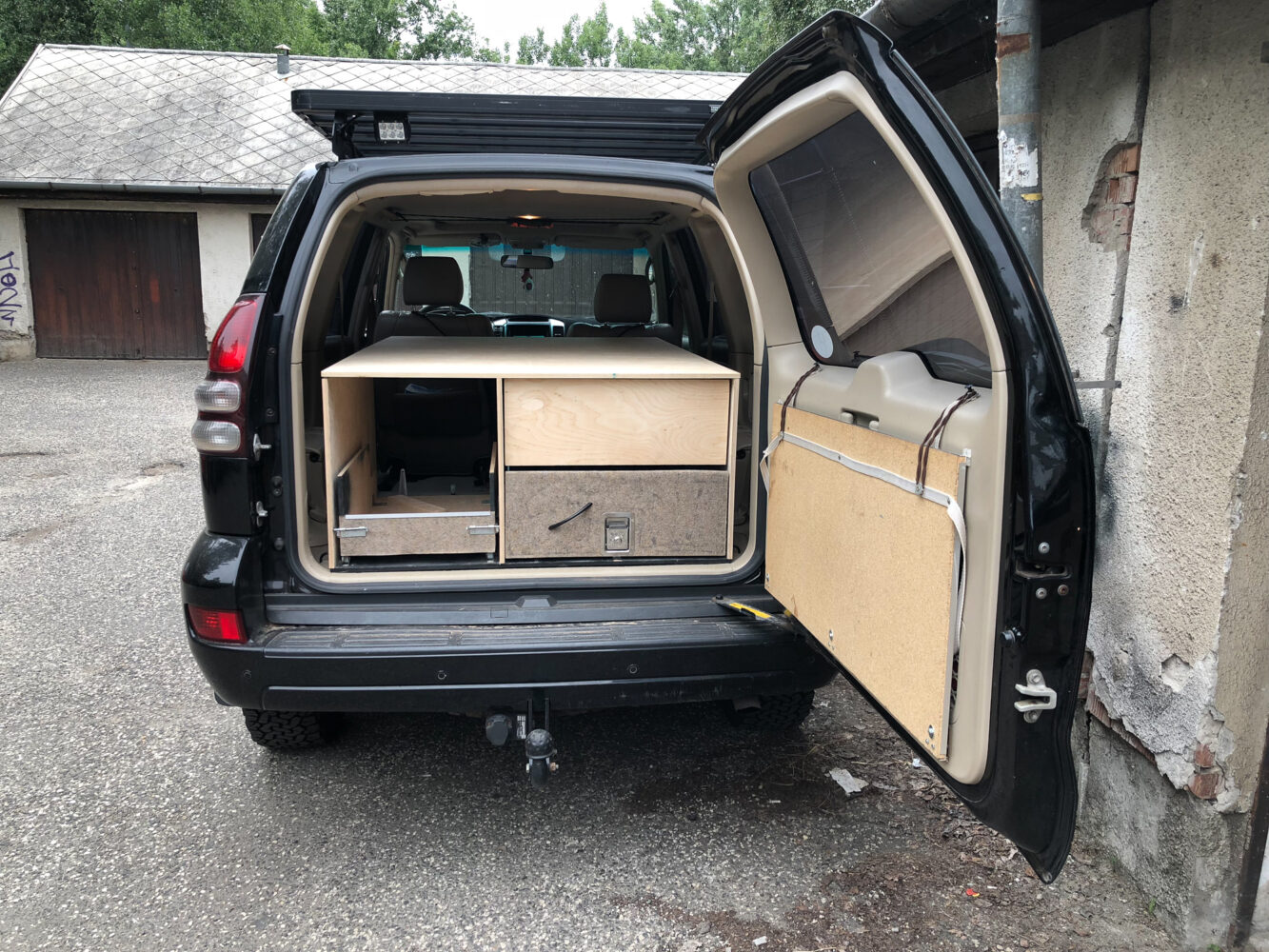




“I was looking at the options from different fridge slide manufacturers but found them to be too expensive, so we built a fridge slide using a pair of drawer slides for our 40-liter fridge. Given the weight (especially when the vehicle is moving), the bottom of the fridge slide is supported by small rollers. The budget was about a total of $250 USD, including all the brackets and drawer slides. The three pairs of drawer slides cost me about $100, and they have proven to be strong enough.”
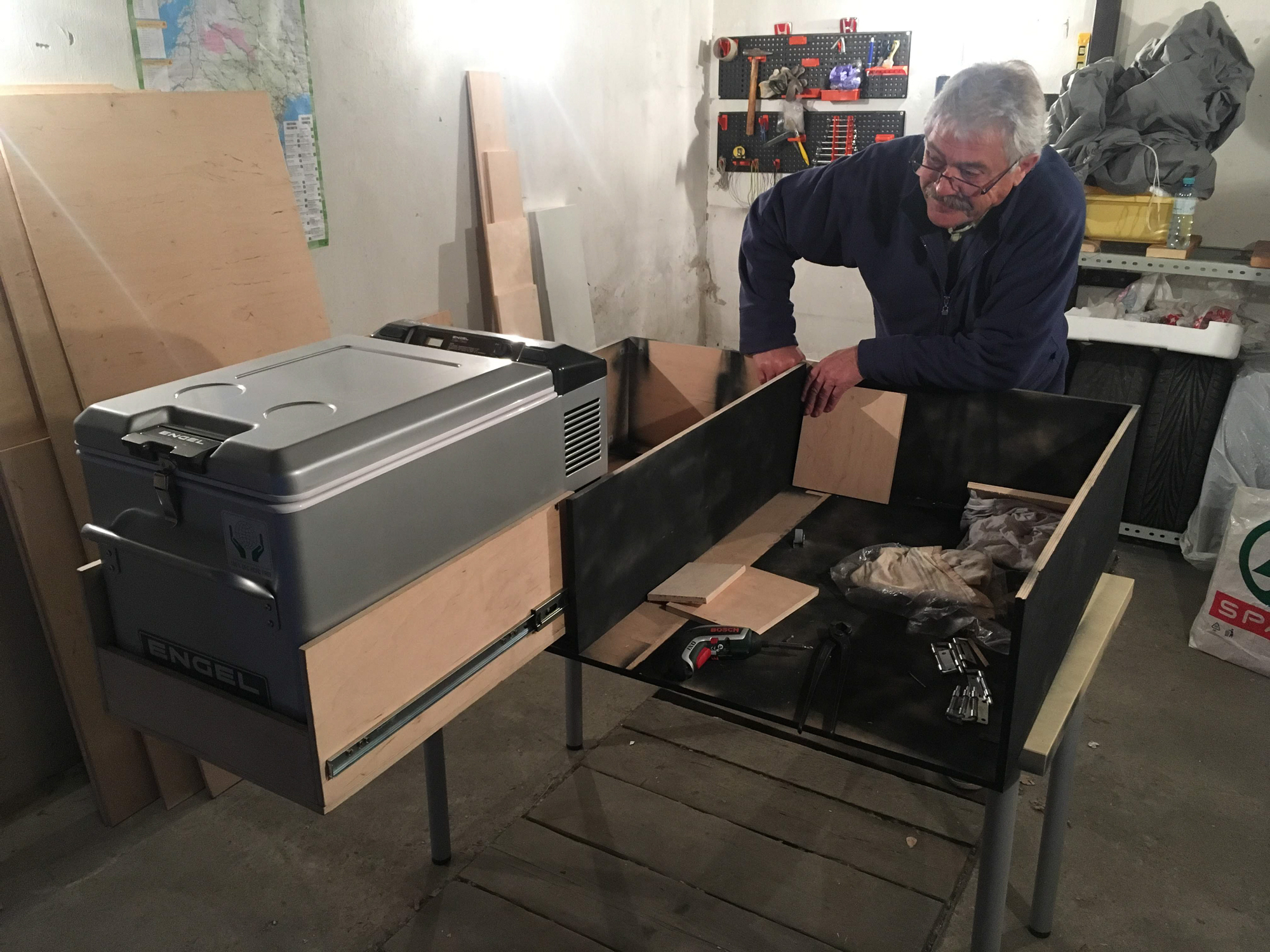
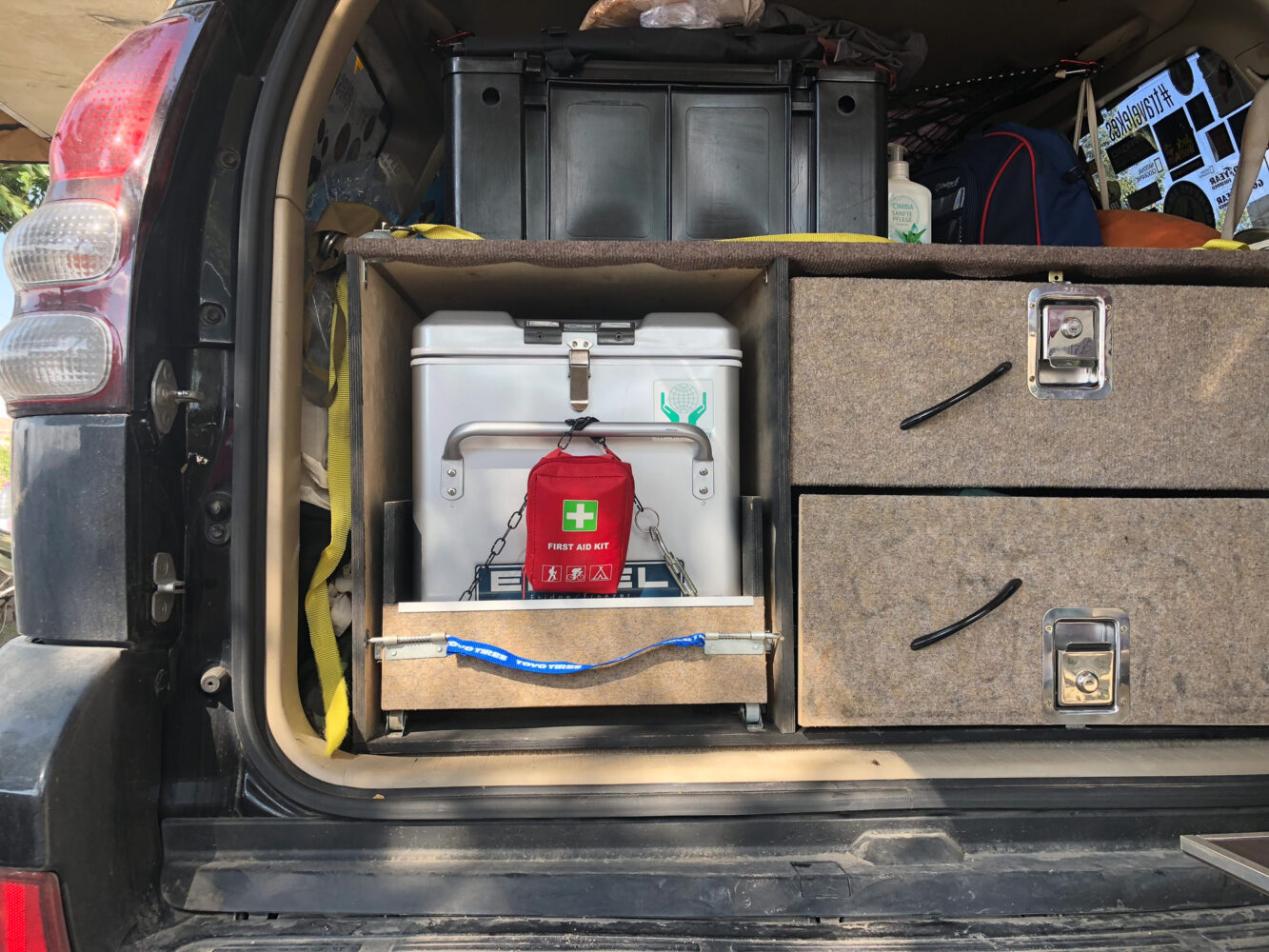

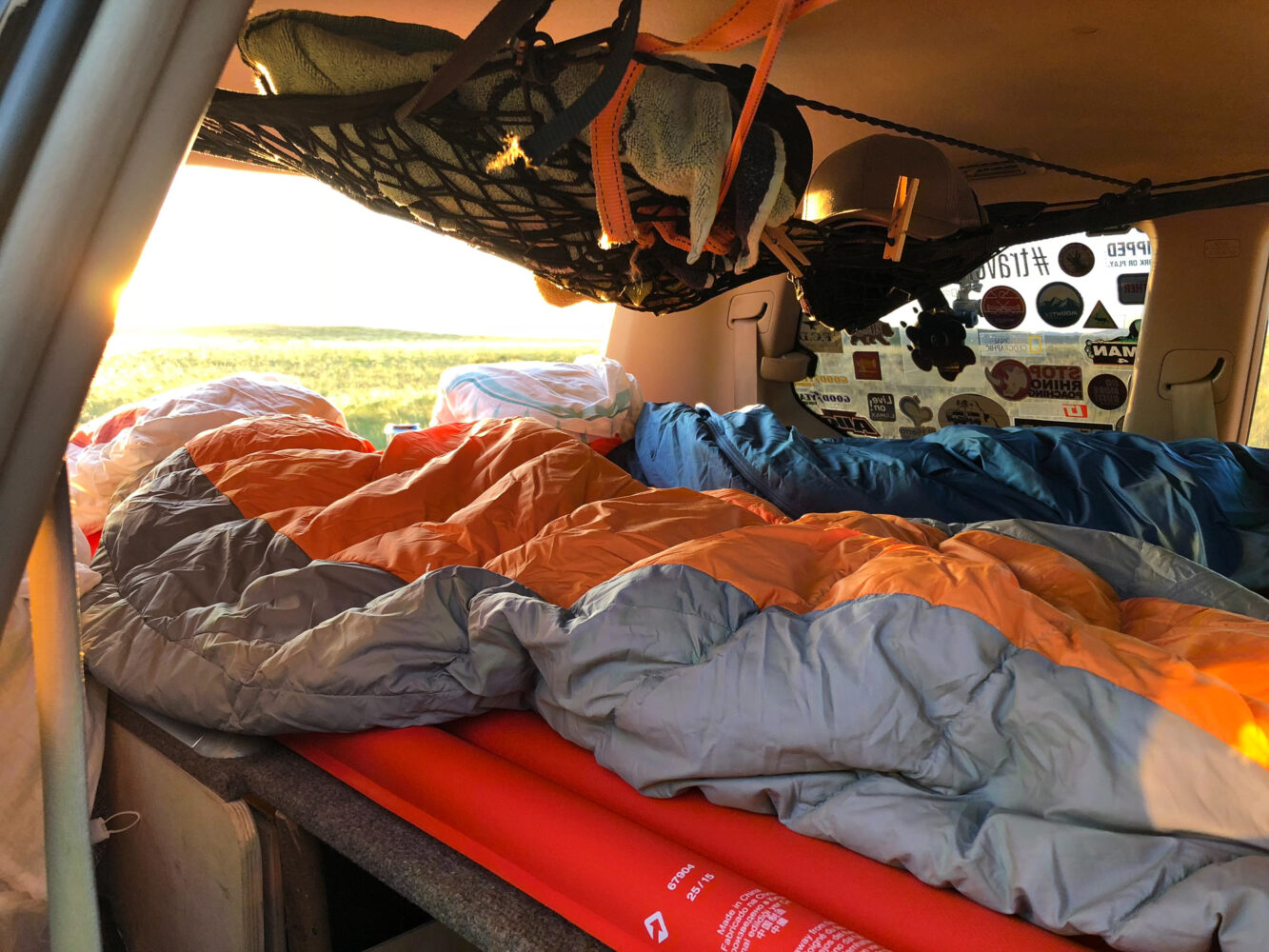

Kitchen Items, Food, and Water Storage
“We stored kitchen items and utensils (plates, pots, Primus double-burner gas cooker), foldable chairs and table, hatchets and spare cooking gas, a wash bag, and a collapsible bucket in the rear drawers,” Ferenc says.
The couple kept dried food items, such as pasta, rice, or olive oil spray, in a Front Runner Outfitters Wolf Pack box, while fresh stuff lived in the fridge or in bags, baskets, or a box. They used three different containers for water, including one that folded flat and was used for a quick wash, a Jerry-sized white plastic water container reserved for remote locations such as Kazakhstan or Mongolia, and a Reliance Beverage Buddy four-gallon water container with a faucet. “We only carried 30 to 40 liters of water at any one time, so it was very important for us not to waste any of it,” Ferenc says. “The faucet was one where you could actually be careful and not just let it run.” Since then, Ferenc says they’ve upgraded to 2.5- and 5-gallon JerryFlex containers, which fold flat, are flexible, and include a robust faucet.
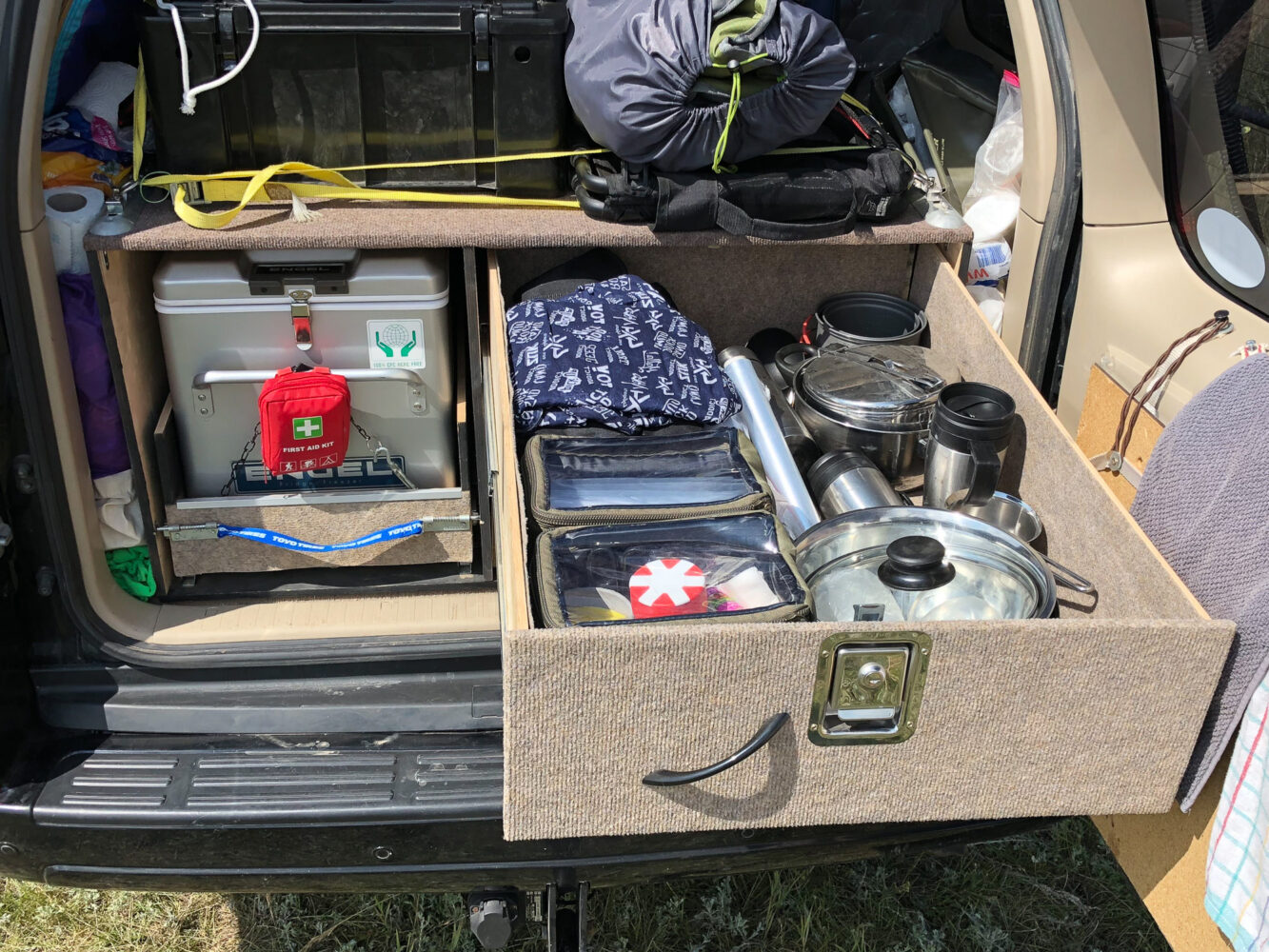
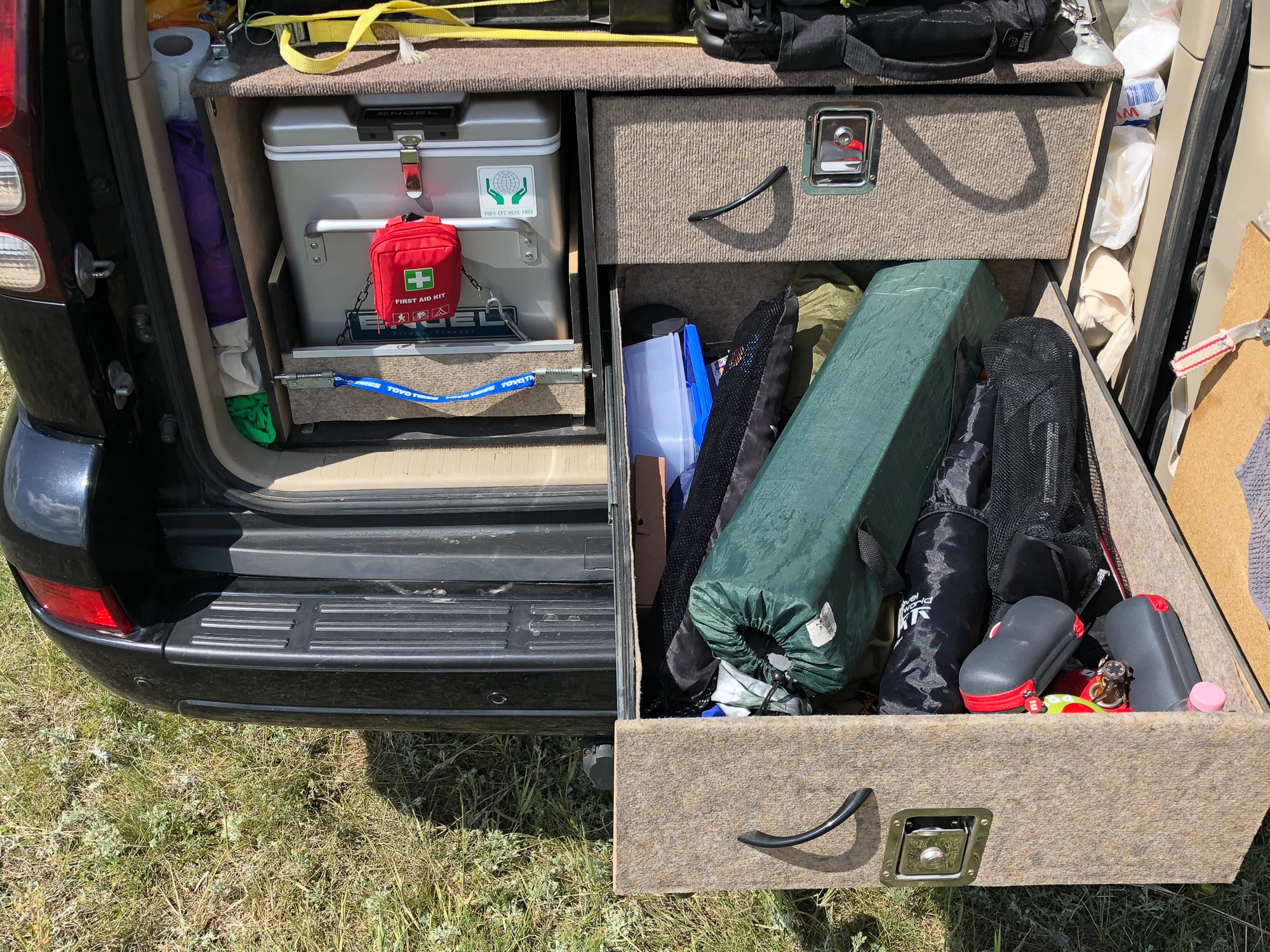
Back Seat Storage
Ferenc and Evelyn traveled through China, where it is mandatory to hire a guide, so they decided to keep one rear seat in the back of the Prado. For additional storage, they installed shelving made of 3/8-inch plywood on the rear passenger side. “If you opened the door, there was a side cabinet with Velcro shelves, which was basically a continuation of the drawer and fridge slide unit,” Ferenc explains.
The couple stored clothes and toiletries in a zip-up Ikea organizer, with items further divided into packing cubes. Ferenc and Evelyn each have their own toiletry bags; Ferenc carries a large Kathmandu travel toiletry bag, while Evelyn uses a generic drugstore branded bag.

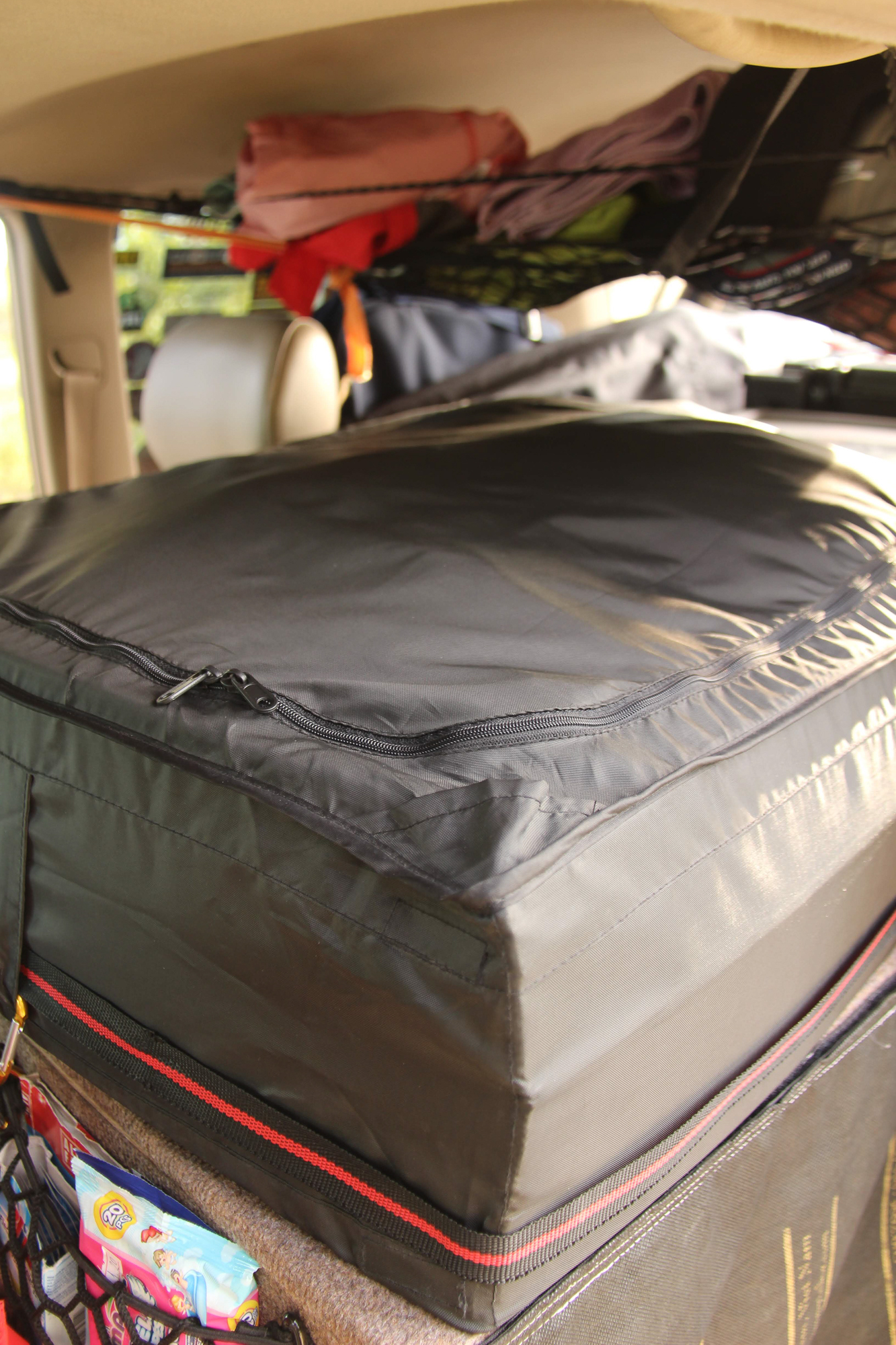
Electronics
“We used a couple of small backpacks with laptop sleeves inside,” Ferenc explains. “The reason we didn’t have a separate place for them inside the truck was that we never left our electronics in the truck. If we went for a sightseeing tour, or anywhere away from the truck, we took them with us, along with our documents.”
Ferenc and Evelyn stored documents in a Victorinox Deluxe security pouch with RFID protection, designed to hold passports, travel tickets, and other paperwork. “We never left anything inside that was important for us to travel home,” he says. “I even took all of my photos with me on my hard drive.”
Tools
An aluminum Zarges box mounted to the Prado’s Front Runner roof rack housed tools, oil, spare parts, and a 30-meter AC power cord.

Specifications: 2006 Toyota Land Cruiser Prado
Euro 4×4 Parts rooftop tent
Zarges roof rack
Primus double burner gas cooker
Front Runner Outfitters Wolf Pack box
Reliance Beverage Buddy four-gallon water container
Five-gallon JerryFlex container
Kathmandu travel toiletry bag
Victorinox Deluxe security pouch
Aluminum Front Runner box

Ferenc and Evelyn’s Latest Build: 1998 Iveco TurboDaily 4×4
After four years on the road in their trusty Prado, Ferenc and Evelyn decided to make a change. They wanted a vehicle that was easier to set up with a comfortable inside living space for working remotely. “In China, we were traveling with two other vehicles that opened in 30 seconds, and for us, it was a mission,” Ferenc says. We’ve learned that a two-week vacation with a rooftop tent is fine, but not when you live in it, and every day you are closing it and opening it. We tend to stay one or two nights in one place, and then we move on. If somebody stays in one place for a week or two, then it’s fine. But if you’re doing it nearly every day, setting up and closing all the time doesn’t work.”

Ferenc and Evelyn both work online. Evelyn is a freelance marketing consultant, while Ferenc works as a lawyer specializing in investments and investment compliance projects. The couple eventually realized that working full-time from the Prado wasn’t efficient. “We worked from the front seats, and we had a fold-down table on the back door, which was the right height to be used as a desk. But because of the size of the vehicle, it wasn’t ideal. One of the reasons we wanted to buy this vehicle was to be covered and to have a table inside.”
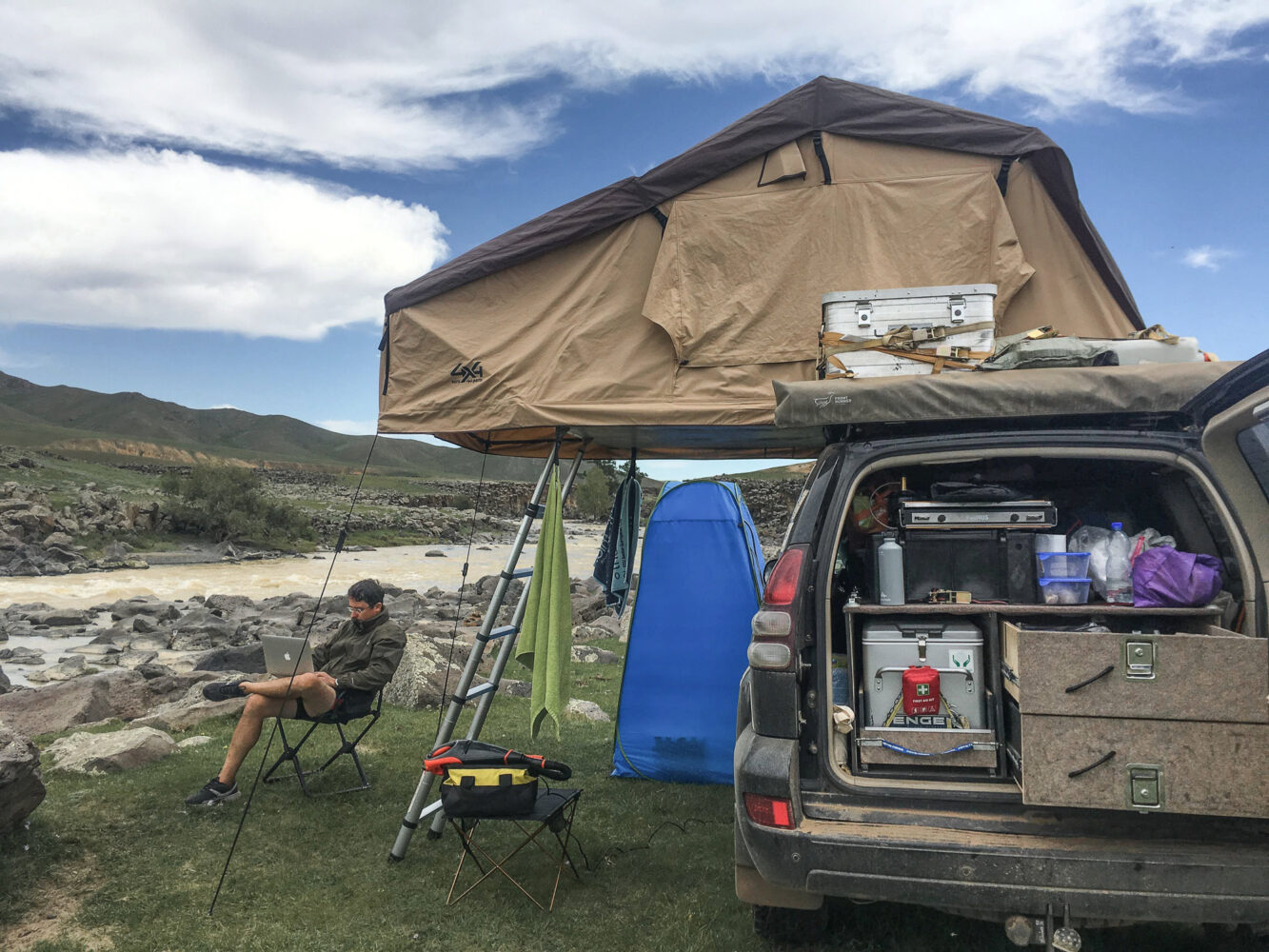

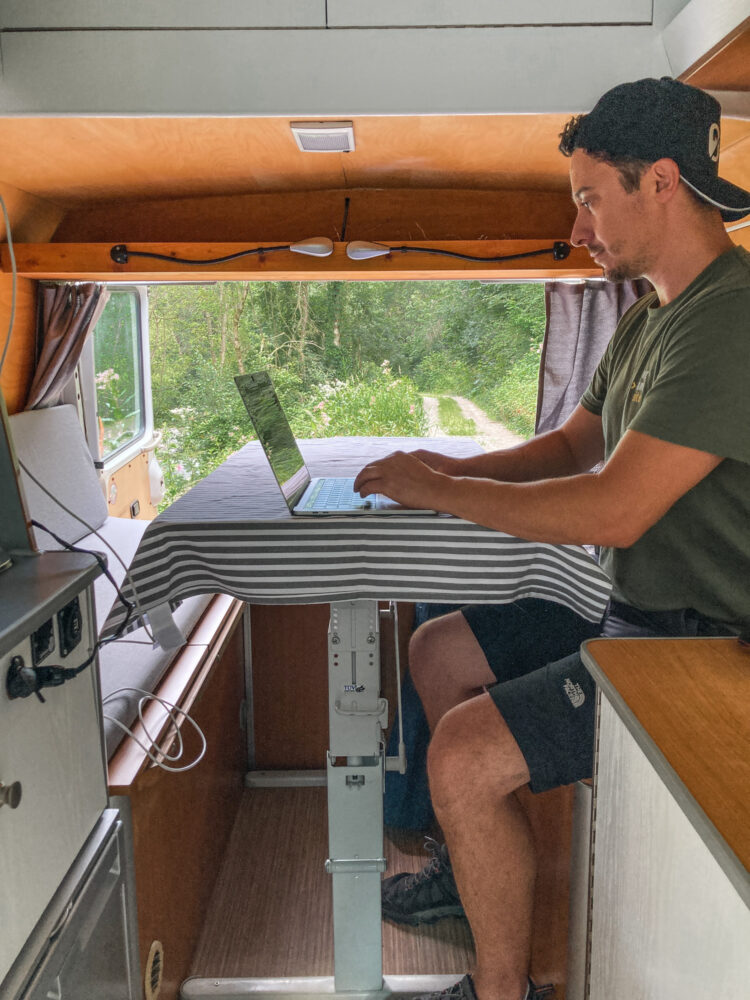
“We also wanted the next vehicle to still be off-road capable. The Iveco is even better than the Prado because it’s got the front locking differential and low range as well. To be honest, it can get to some more advanced places because of the higher ground clearance. And it has the living space inside.”
To follow Ferenc and Evelyn’s overland adventures, visit them at overlandsite.com or @overlandsite on Instagram.

Our No Compromise Clause: We carefully screen all contributors to make sure they are independent and impartial. We never have and never will accept advertorial, and we do not allow advertising to influence our product or destination reviews.




